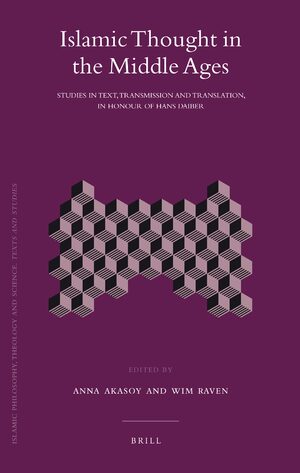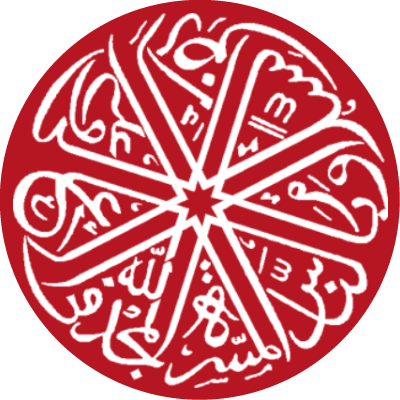| Fields | FI | SI | Content |
|---|---|---|---|
| 001 | A7254 | ||
| 003 | https://data.diamond-ils.org/agent/7254 | ||
| 005 | 20140728085523.0 | ||
| 100 | . | . | $a 20050228 a fre y50## #### ba0 |
| 101 | . | . | |
| 102 | . | . | $a XX |
| 120 | . | . | $a # b |
| 103 | . | . | |
| 200 | . | 1 | $7 ba0y ba 0 y $8 |
| 200 | . | 1 | $7 ba0y fa 1 y $8 |
in Miscellanea Arabica et Islamica : Dissertationes in Academia Ultrajectina prolatae anno MCMXC / Selegit et editit F. de Jong
in Manuscripts of the Middle East : a journal devoted to the study of handwritten materials of the Middle East / edited by Jan Just Witkam
المعجم المفهرس لألفاظ الحديث النبوي : عن الكتب الستة وعن مسند الدارمي وموطأ مالك ومسند أحمد بن حنبل
ترتيب وتنظيم ونشر آ. ي. ونسنكك
ليدن : مكتبة بريل, 1936-1969
المعجم المفهرس لألفاظ الحديث النبوي : عن الكتب الستة وعن مسند الدارمي وموطأ مالك ومسند أحمد بن حنبل
ابتدأ ترتيبه وتنظيمه ونشره آرنت يان ونسنك, تأليف ويم رافن، يان يوست ويتكام
إستانبول : دار الدعوة، 1988
in Locating Hell in Islamic traditions / Edited by Christian Lange
The Manuscripts and Editions of Ibn Dāwūd's "Kitāb al-Zahra"
Editions 1
Relationships with other works 1
المعجم المفهرس لألفاظ الحديث النبوي
Raven, Wim ┃ Wensinck, Arent Jan, 1892‒1939 ┃ Mensing, Johan Peter Mari, died 1951 ┃ Brugman, Jan, 1923‒ ┃ Witkam, Jan Just, 1945‒ ┃ الاتحاد الأممي للمجامع العلمية
Editions 1
Relationships with other works 1
المعجم المفهرس لألفاظ الحديث النبوي : عن الكتب الستة وعن مسند الدارمي وموطأ مالك ومسند أحمد بن حنبل
← المعجم المفهرس لألفاظ الحديث النبوي : عن الكتب الستة وعن مسند الدارمي وموطأ مالك ومسند أحمد بن حنبل
Part of المعجم المفهرس لألفاظ الحديث النبوي .
Raven, Wim ┃ Wensinck, Arent Jan, 1892‒1939 ┃ Witkam, Jan Just, 1945‒
Editions 1
Relationships with other works 1
Islamic thought in the Middle Ages
Raven, Wim ┃ Daiber, Hans, 1942‒ ┃ Akasoy, Anna Ayşe, 1977‒
Editions 1
A life with the Prophet?
Raven, Wim ┃ Fuess, Albrecht, 1969‒ ┃ Weninger, Stefan, 1959‒
The present study presents a comprehensive insight into actual trends in academia in Arabic literature and Islamic studies. In this respect, the contributions pay tribute to Wim Raven, an outstanding The present study presents a comprehensive insight into actual trends in academia in Arabic literature and Islamic studies. In this respect, the contributions pay tribute to Wim Raven, an outstanding scholar of early Arabic literature and the formative period of Islam and someone who always had new and surprising twists and turns in his research and scholarly productions. The same holds true with the papers presented here. Robert Hoyland presents us with his reasoning about the origin of the term “aʿjamī language” in the Qur’an. Was this really a “non-Arab” tongue as later tradition would have it, or would it be better to classify it as a “North-Arabian” dialect? Anna Akasoy deals with “chick lit” in the Hijaz and the modern image of Aisha as Muslim role Model. Remke Kruk looks at famous warrior women in pre-Islamic literature and their relation to the forthcoming Prophet Mohammed. Jan Just Witkam provides us with the story (Arabic edition and English translation) of a young man setting out from Damascus, travelling further north looking for adventures, fighting monsters, losing his wife, marrying a second one, then a third one, only to find out that she can transform into a gazelle: Indeed, this story has it all! And it provides a good insight in Early Islamic Story telling. Finally, Hans Daiber explains how the thinking of Aristotel’s Organon became included and modified in Ibn al-Muqaffaʿs (d. 140/757) Kitāb al-Adab al-kabīr (Great Book of the Rules of Conduct). Central themes of his contributions are the pursuit of knowledge, wisdom, virtue and friendship as motors for human behavior.
Editions 1
Edited by Anna Akasoy and Wim Raven
Leiden ; Boston : Brill, 2008
- 2008
- English
- 2017
- English
- 2008
- English
- 2017
- English
- 1936 — 1967
- Arabic
- 1936 — 1967
- Arabic


